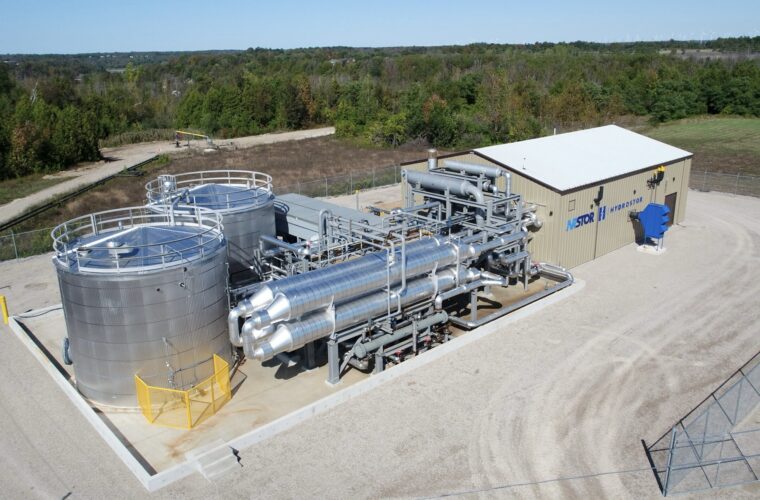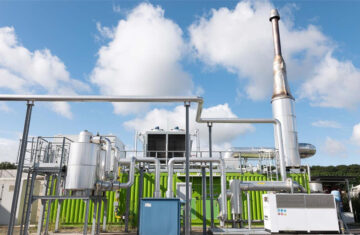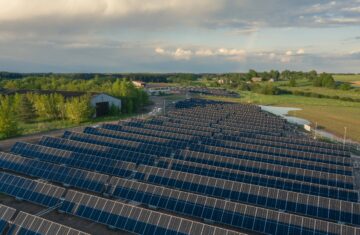Although becoming carbon neutral is a difficult goal, some surprising places have reported making progress. One of those is Cyprus, a country in Europe that, until a few years ago, was at the bottom of the renewable energy scale. The nation has been gaining momentum lately. Cyprus is currently testing a novel compressed air energy storage system that takes advantage of the ocean’s water pressure to store energy for extended periods of time.
Long-Term Energy Storage to Increase Renewable Energy Production
Iceland was the first country in Europe to reach the goal of using only renewable energy back in 2015. Iceland is not an EU member, so there is still plenty of competition to be the first country in the EU to completely remove fossil fuels from the energy mix.
It appeared for a while that Cyprus was on the verge of passing away. However, on February 24, the Guardian reported on the EU’s progress in renewable energy, naming Cyprus as one of the countries reporting significant gains.
The Guardian states that there is still much work to be done. According to a summary of the data from 2022, the EU consumes roughly 41% of its electricity from renewable sources on average, with Sweden and Denmark leading the way at 83.3% and 77.2%, respectively. Malta (10.1%), Hungary (15.3%), the Czech Republic (15.5%), and Luxembourg (15.9%) were at the bottom, with Cyprus (18%) barely ahead of the bottom scorers.
Long-term energy storage would go a long way toward assisting countries like Cyprus in moving up the renewable energy ladder faster. A long duration energy storage system can provide clean kilowatts for extended periods of time, up to whole days, weeks, or even seasons, in contrast to lithium-ion battery systems, which normally have a lifespan of four to six hours. At that point, for a small portion of the price of a new nuclear power plant, intermittent energy sources, such as wind and solar power, could offer stability, continuity, and reliability similar to those found in nuclear power plants.
One Type Of Compressed Air Energy Storage Device
Investors and innovators have been very active in the long duration energy storage space, with some of the most recent activity centered on novel long duration technologies that utilize the laws of thermal transmission.
Long-term innovators can also find rich ground in the Earth’s natural systems. Consideration has recently been given to pumped hydropower, for instance. This well-established, decades-old technology works flawlessly with solar and wind energy. The process transfers water from an upper reservoir to a lower generating station by means of gravity. Ideally, only when there is surplus renewable energy available to power the pumps—see our long-duration archive here—is the upper reservoir refilled.
Another long-duration technology that has been gaining traction in the 2000s is compressed air. Although some of the earlier attempts at compressed air have failed, new variations continue to appear.
Although each has limitations, compressed air systems can use man-made structures or subterranean rock formations as storage platforms. There is less chance of a conflict with surface land use when storing goods underground because the containerization is robust and prefabricated. The geology of rock formations, however, varies. Although man-made platforms are more costly and may encounter conflicts with competing land uses, they have the potential to cover a far greater range of site options.
Just Add Water for Compressed Air Energy Storage
We first reported on a bladder-based energy storage system in 2022. It functions similarly to an underwater pumped hydro system, but instead of using gravity, it uses water pressure.
An alternative approach to using water pressure for energy storage is presented by the Israeli startup BaroMar, which has developed a compressed air system based on a simple sounding tank. The system is intended for usage on islands and in coastal regions close to deep water. The tanks will be positioned at a depth of about 500 feet, where there is enough water pressure and less likelihood of encounters with marine life.
BaroMar says, “The surrounding water’s hydrostatic pressure makes it possible to construct large, long-lasting tanks at a very low cost.” A design approach that concentrates on getting rid of underwater moving parts and subsystems also helps with cost-cutting. Using steel and concrete that have been proven by the sea, the tanks are built on land and then towed into position.
Though the devil is in the details, that seems fairly straightforward. The engineering firm Jacobs revealed earlier this week that it was chosen by BaroMar to create the preliminary design for the Cyprus project, which is being marketed as a “first-of-its-kind underwater large-scale, long-duration energy storage pilot project.”
Power, energy, and marine engineering are fields in which BaroMar’s energy storage solution is well-versed, as noted by Jacobs. It is a delicate task to combine them with the hydrostatic pressure of seawater, though.
According to Fiachra Ó Cléirigh, vice president of Jacobs, “this project requires extensive geophysical, geotechnical, and bathymetric surveying, investigation, feasibility studying, and permitting for tank installation at deep depths for onshore mechanical and electrical equipment needs.”
How Does It Operate?
According to Jacobs, the 4 megawatt-hour capacity of the Cyprus project will be achieved by large, rigid tanks that are ballasted on the seabed.
According to Jacobs, the tanks are made to withstand loads brought on by the marine environment, compressed air, and hydrostatic water pressure under both installation and operating conditions.
Subsea cable will transport surplus electricity generated by solar and wind power to the tanks, where compressors will be fed. The compressed air is fed back to the land, expanded, and fed into a generator when more electricity is needed.
Yonadav Buber, the founder of BaroMar, was interviewed by the nonprofit ISRAEL21c last September. He explained that building underwater tanks is less expensive because the seawater’s pressure acts as a stabilizer. While islands and coasts are the only places to choose a site, these areas are also infamously congested. Large-scale land-based energy storage opportunities are hard to come by.
This is a truly brilliant solution since it elegantly gets around the issue. Because we are talking about the seabed, which is not exactly prime real estate, it also opens up the possibility of virtually infinite energy storage, Buber told ISRAEL21c writer Naama Barak.
In contrast to some of the other new long-duration energy storage technologies that are being developed today, Buber stressed that the technological components are established and do not require significant further development. He pointed out that the primary obstacles standing in the way of the pilot project’s commercial deployment are those related to marine-related engineering and regulatory requirements.
Cyprus Will Use Only Renewable Energy By 2030, With Help From Energy Storage
Buber stated to ISRAEL21c last autumn that Cyprus fits into the three primary client categories that BaroMar targets. Port facilities and other sizable industrial complexes are among the large-scale energy consumers in the second group, while producers of renewable energy with excess energy are in the first.
“And governments make up our third category of customers,” Buber stated. For instance, we are in talks with the Cypriot government to have them become the first EU member state to run entirely on renewable energy by 2030.
It remains to be seen whether or not that lofty objective can be accomplished. Nonetheless, as our friends at PV Magazine noted in February, Cyprus already plans to reduce its renewable energy output by a significant 28% by 2024, indicating that it has a sizable surplus on hand.
PV Magazine identified the primary causes of Cyprus’s overproduction of renewable energy as the absence of adequate energy storage infrastructure and international connections.
Cyprus is ahead of you if you are thinking that green hydrogen could help absorb some of those extra clean kilowatts. In 2022, Cyprus was ranked as a “laggard” in the EU’s national hydrogen strategies. However, the following year, a group of 27 countries came together to propose that Cyprus serve as the site for the EU’s inaugural “Hydrogen Valley.” While we will be watching for developments, the current emphasis is on producing green hydrogen using water as a source and utilizing energy from renewable sources.



